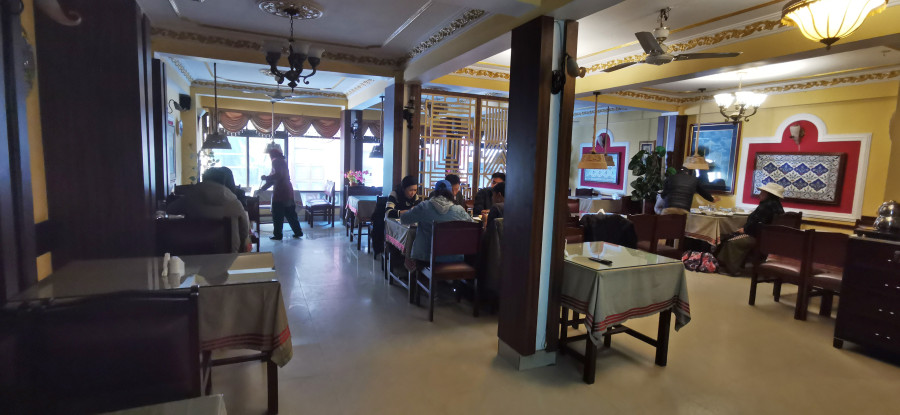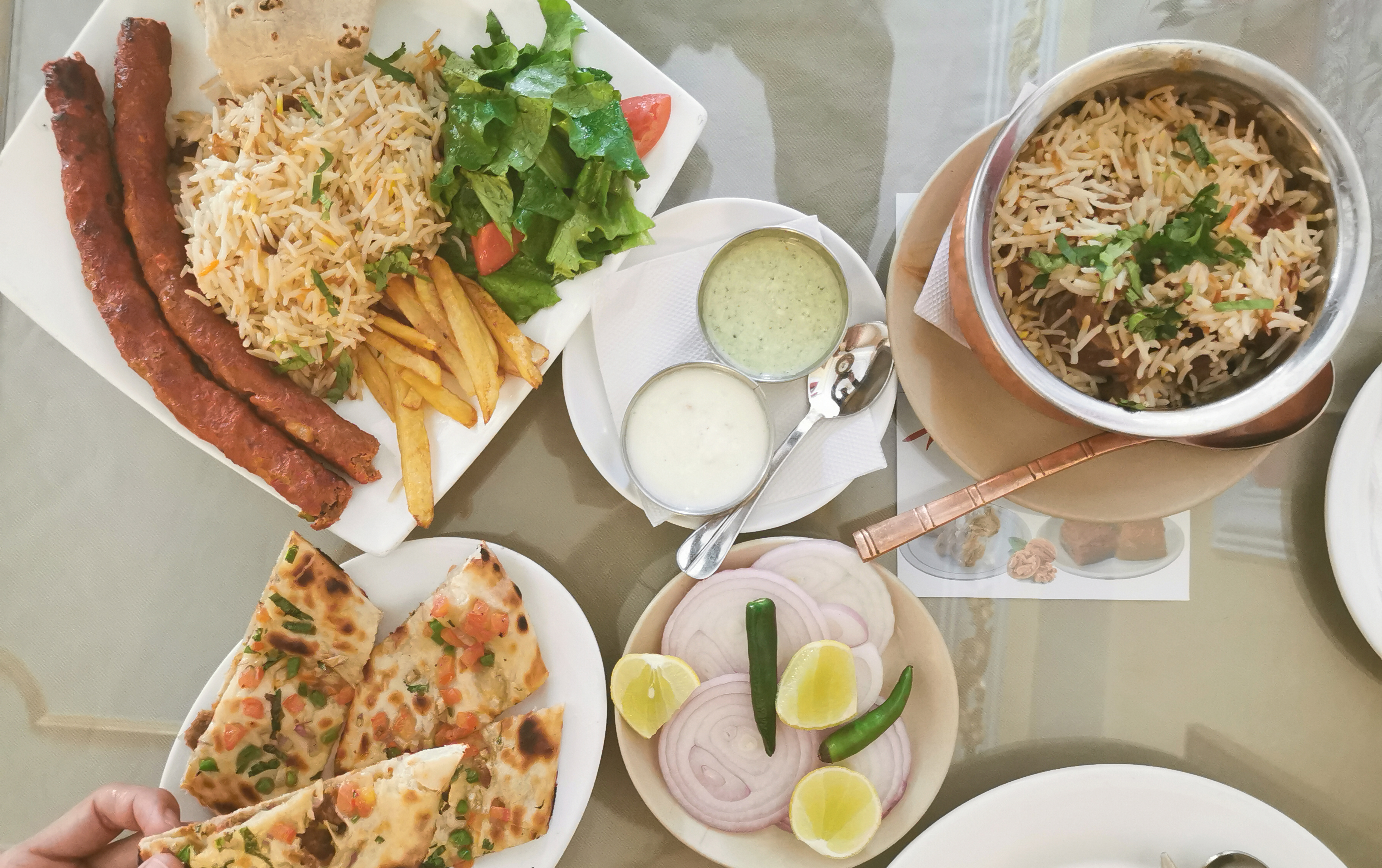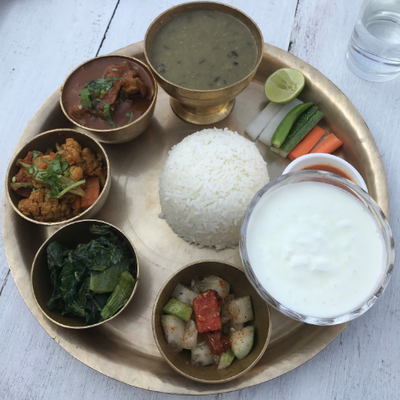Food
Fifteen years of good reputation dashed in one cold, mediocre lunch
Anatolia is famed for its biryani but what we received was a cold mess of mildly spiced rice and mutton.
Hantakali
Thamel has always had establishments that served halal food. The lanes in and around Ga Hiti Marg and JP Marg have long had Muslim-owned restaurants that served patrons reasonably priced halal food. But for many years, when it came to mid-range halal restaurants in Thamel, choices were far and few between. Anatolia Restaurant was one of those few.
Ever since opening in 2004, Anatolia has continued to draw crowds and remains hugely popular. Many who have had the restaurant's biryani heap praises on the dish. So naturally, when the decision to visit Anatolia was made, expectations were high.
Depending on what kind of diner you are, the menu at Anatolia will either leave you confused, excited or overwhelmed. The menu is 15-pages long and covers Turkish, Nepali, Indian, Chinese, and Tibetan cuisine.
The first thing on the menu that catches our attention is manti, Turkish dumplings. Unlike Nepali momos, which are steamed, manti is boiled in water and served with curd. But our hopes of trying out this popular Turkish dish are dashed when the server says 'sir, yo ta ahilay chaina'—we don’t have this right now.
And so we move on to other dishes on the menu’s Turkish section and settle on the adana urfa kebab combo meal, one of several combos on the menu. The combo, according to the menu, includes adana kebab, roti, fries, plain rice, salad and plain lassi. But what arrives on the table is slightly different. Instead of plain rice, we are served biryani. The server doesn't bring the lassi, and we forget to ask him about it.
These two things don’t disappoint us as much as the dish’s barely warm mutton adana kebab (while lamb is the standard meat for the dish in Turkey, Anatolia’s version uses mutton). The preparation of the adana kebab is the same as the sheekh kebab, which is a more common version in the Indian subcontinent—minced meat is finely blended and marinated with spices and then threaded on skewers and grilled. The kebab tastes best when it's fresh off the skewer and served hot.

But any semblance of heat had been leached from the adana kebab by the time it got to the table, and it had consequently lost its juiciness. Its texture, which should have been pleasantly pasty, is now reduced to an almost dry sponge. When I try to cut a piece, the kebab crumbles in lumps. It’s unfortunate because the kebab would have otherwise been a solid dish in itself, and would also have complemented the thin roti served alongside. The disappointment doesn't end there. The fries served with the dish are cold, limp, and soaked in oil. Chopped spinach and a few chunks of tomatoes made up the salad. The biryani is mildly seasoned and is nothing remarkable.
The mutton keema naan does a better job of lifting our spirits after the ordeal wrought by the adana kebab. The sliced wedges of naan are covered in a glossy sheen of ghiu and are freckled with small chunks of chopped coriander, tomatoes and green and white onion, making it a visually appealing dish. The well-spiced minced chicken is uniformly spread throughout the bread. It’s blackened edges add a nice bracing touch to the somewhat sweet bread.
The fourth dish we try is Anatolia’s famed biryani, and we opt for the mutton version. Much to our dismay, even the biryani is only mildly warm. It is covered with a thin coating of oil and is mildly spiced. There’s a hint of sweetness from the caramelised onions and a faint herbal mintiness, courtesy of cardamom. Hidden in the mound of rice are three substantial chunks of mildly spiced mutton, which aren’t the most tender chunks of goat I’ve ever had; they are, in fact, several minutes away from achieving that pull-off-the-bone quality. The biryani surely doesn't live up to its fame.
The final dish to arrive at our table is a dish the menu labelled ‘Chinese momo’. After probing the server, we learn the dish is what is more commonly called bao tse, also called thulo momos. The staffer does his best to dissuade us from ordering the dish and tells us ‘esko bokra ekdum moto cha, Nepali lai khasai man pardaina, Chinese lai man parcha’—the thick wrapper won’t appeal to Nepalis, only the Chinese like it. But we order them anyway and it is a decision we do not regret. While most restaurants serve less than four pieces of this type of dumpling, Anatolia raises the quantity bar by serving eight pieces, each as big as a toddler’s fist. And for Rs 270 per plate, the dish is a bargain.
-edited5555.jpg)
But what Anatolia has done to the bao tse’s meat stuffing is likely to split opinions. The stuffing for bao tse is usually minimally spiced, letting the meat take centre stage. But by using a substantial amount of momo masala in the meat stuffing, Anatolia’s bao tse tastes more like Bakery Cafe momos on steroids. This is not to say that they are bad. They are just amusingly different, and it might take diners that are used to the more common version of the bao tse some time to get their palate around it.
Given Anatolia’s 15 years of being in the business and the good things diners have to say about the establishment’s food, I couldn’t help but feel confused by our lunch—there’s no way the establishment would have gotten where it is based on the kind of food we ate. The only conclusion I could come to is that perhaps my timing was wrong. Perhaps the day I was there coincided with the day the kitchen team was having a terribly sloppy day.
Anatolia Restaurant Rs 190 to 900 per person
Food: ★
Ambience: ★★★
Value: ★★★




 16.12°C Kathmandu
16.12°C Kathmandu









%20(1).jpg&w=300&height=200)

